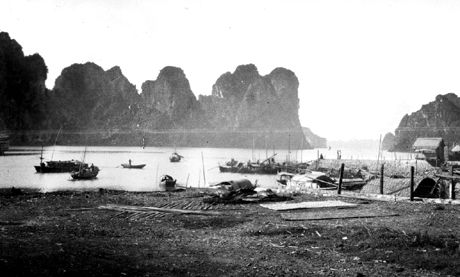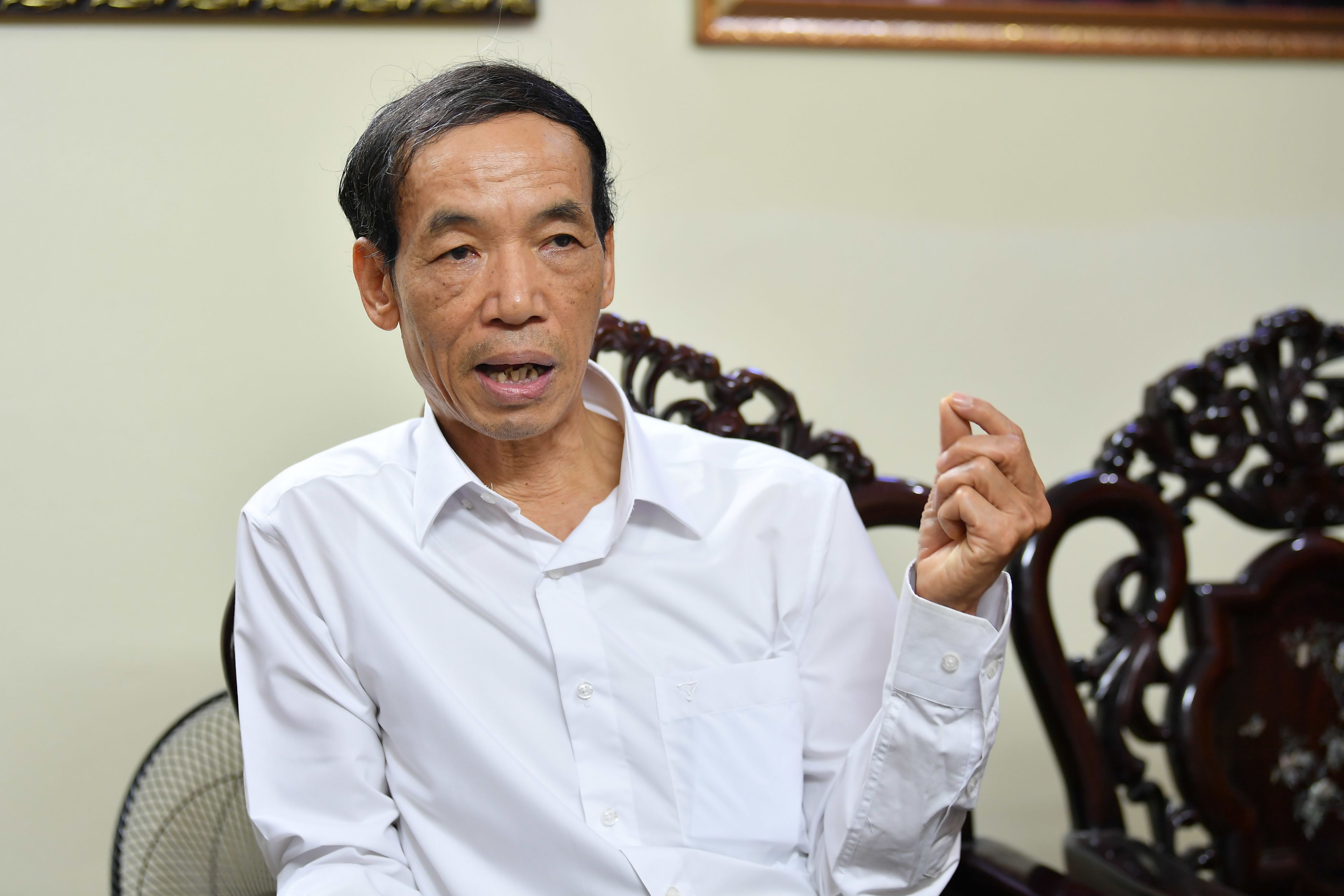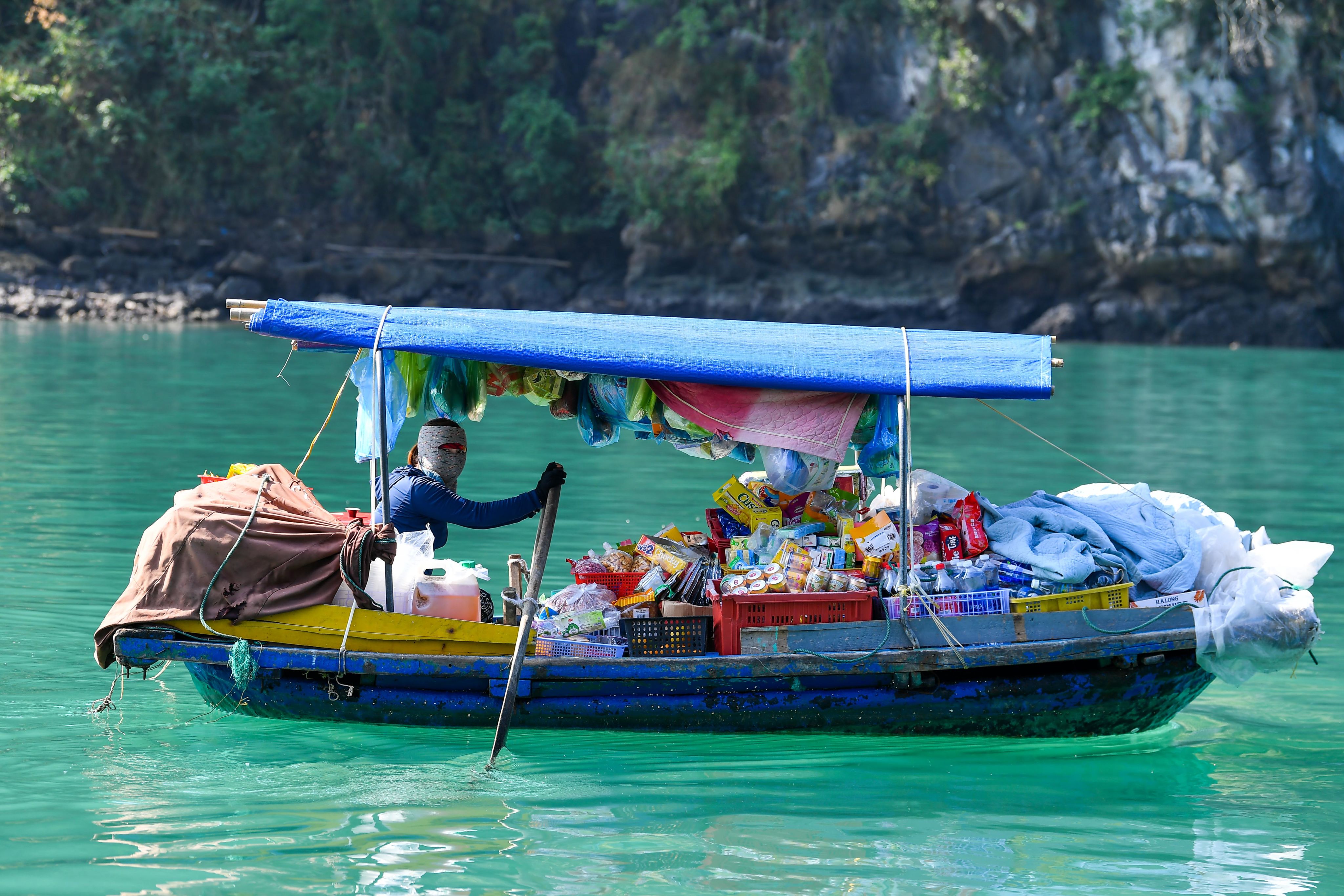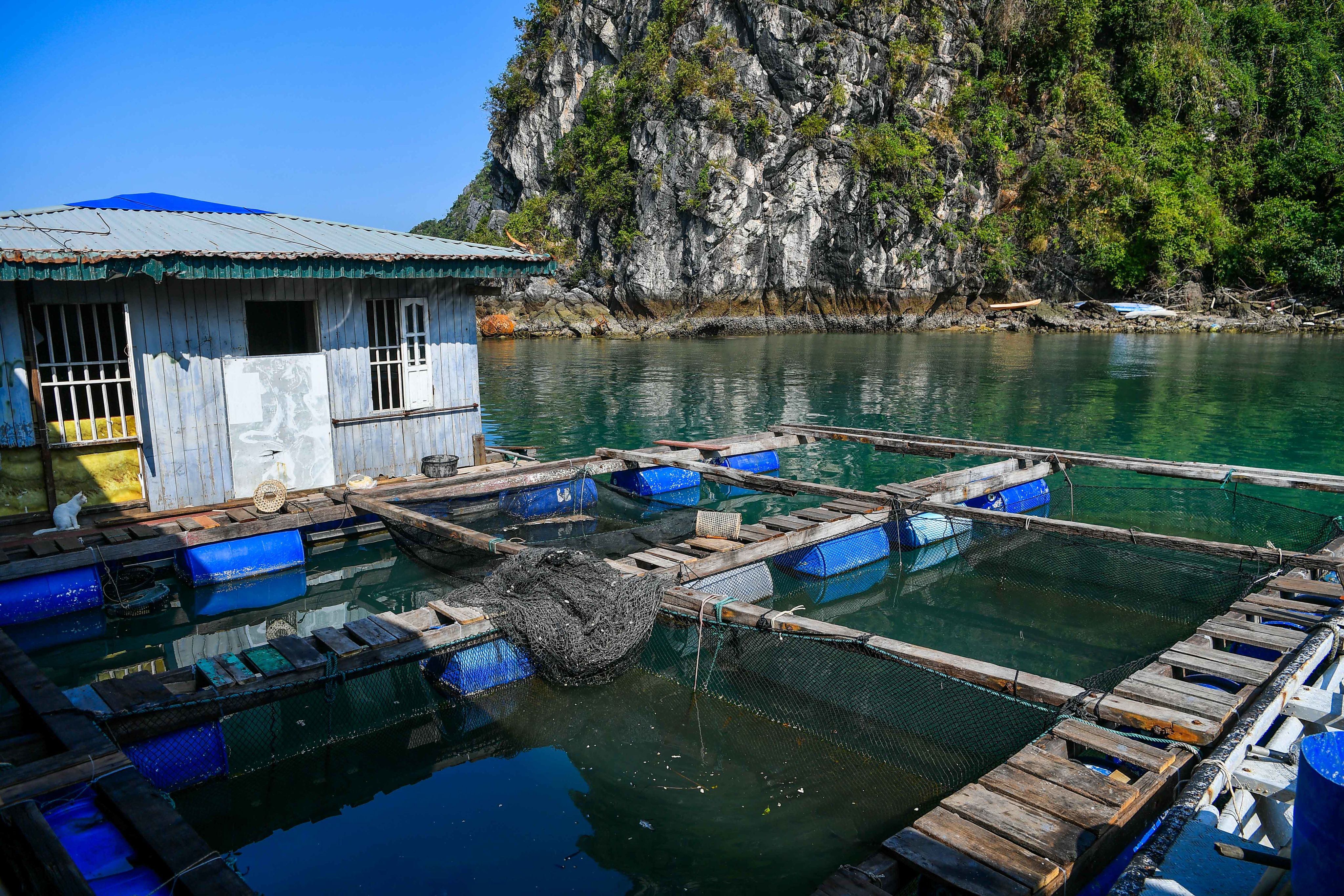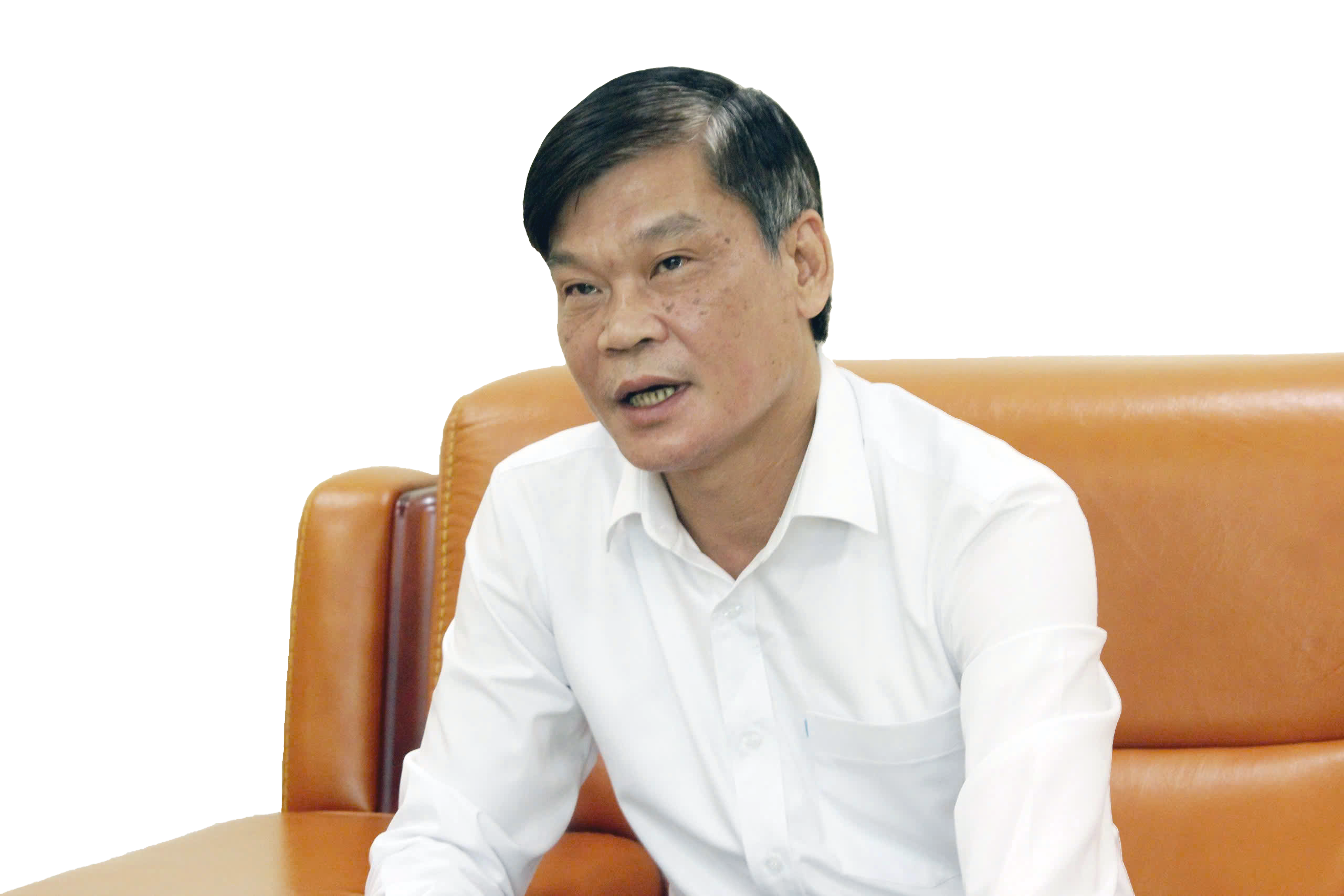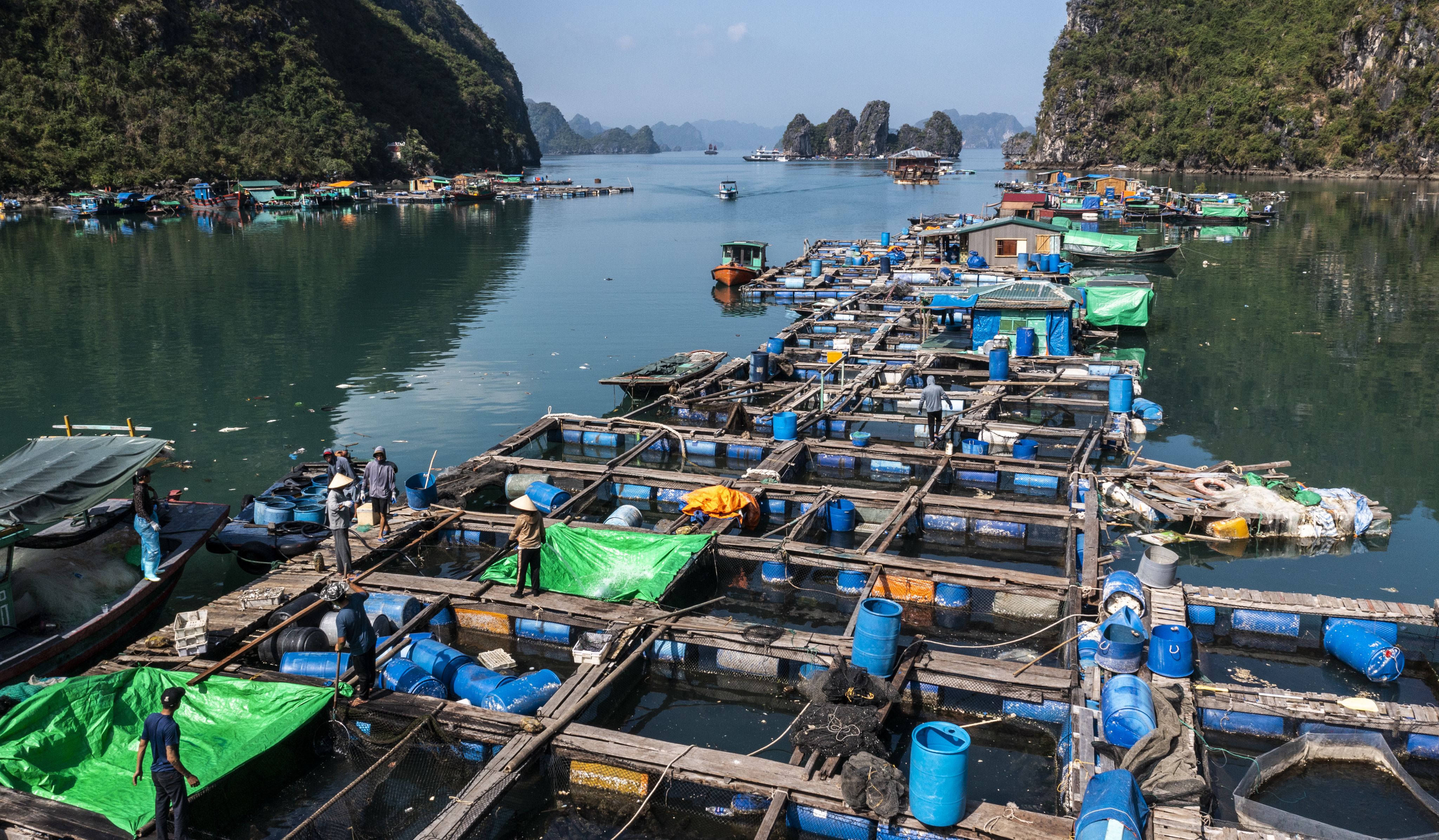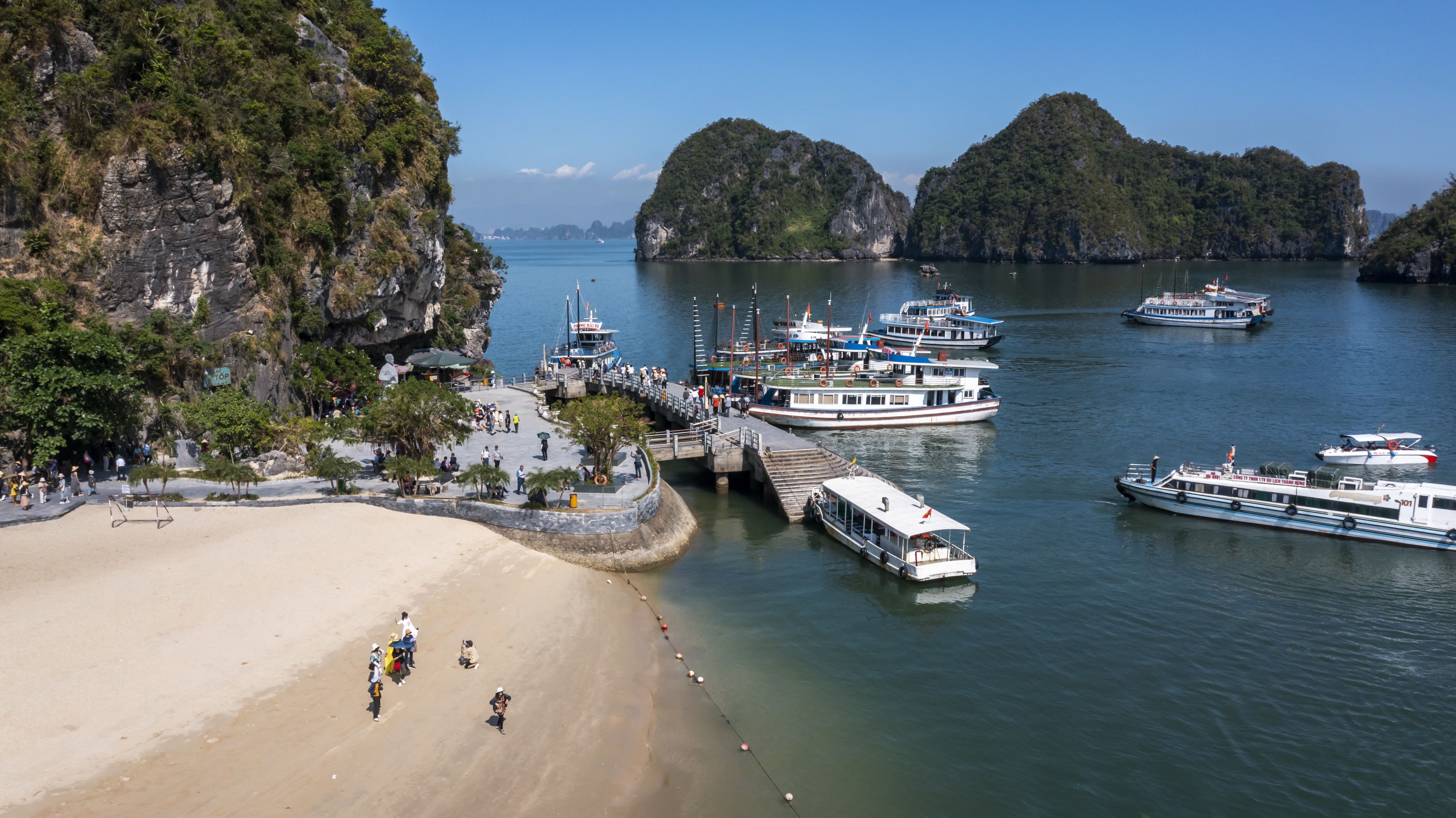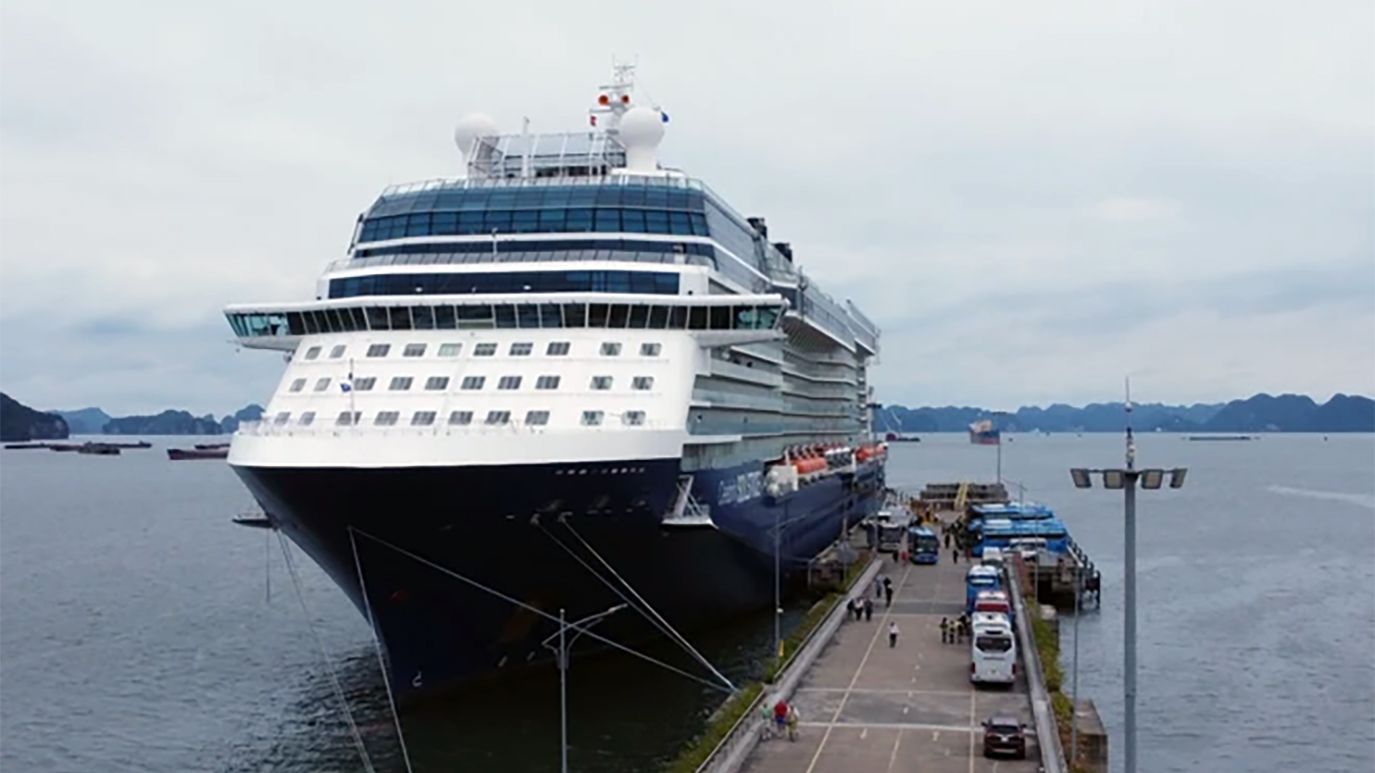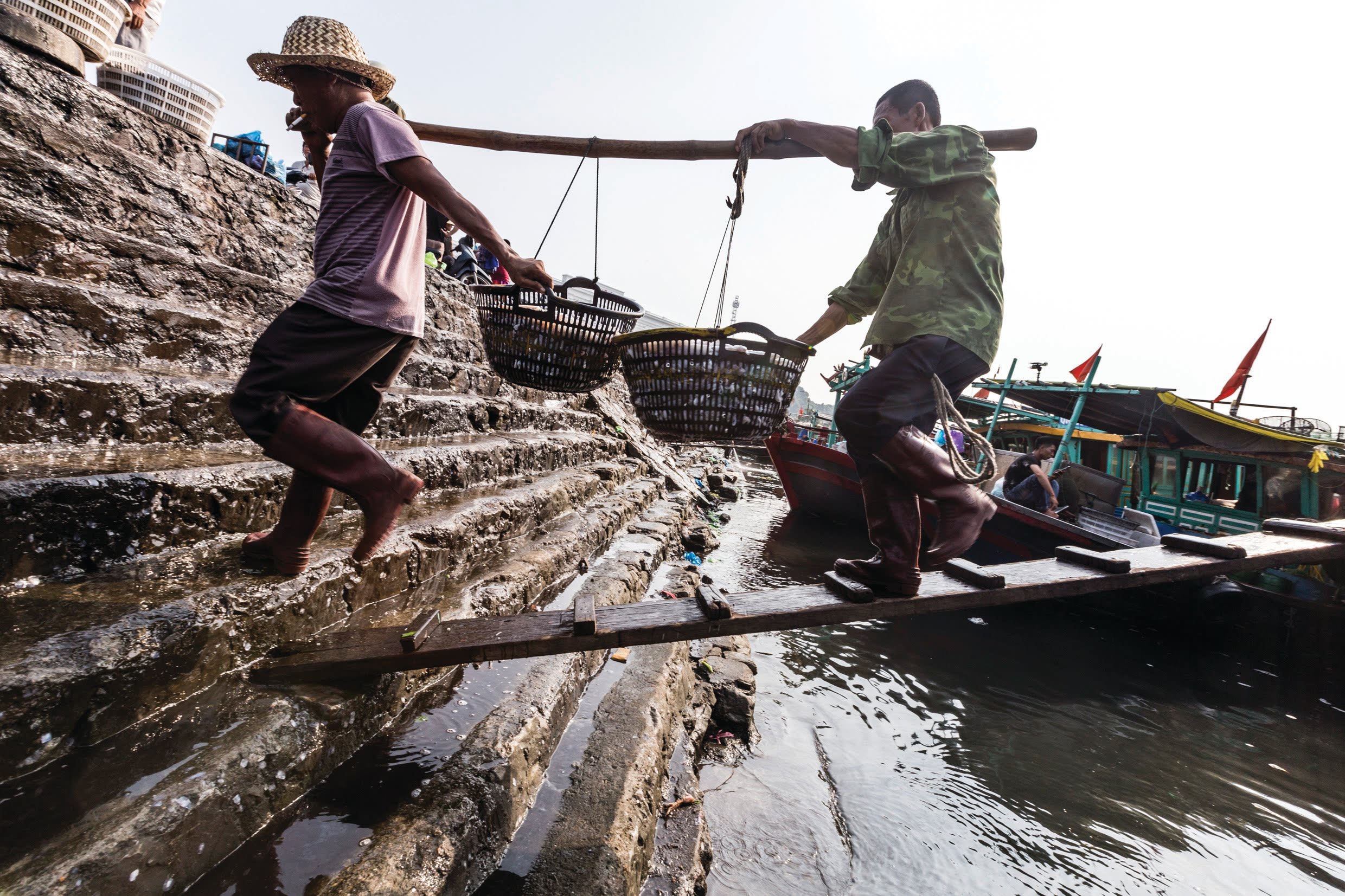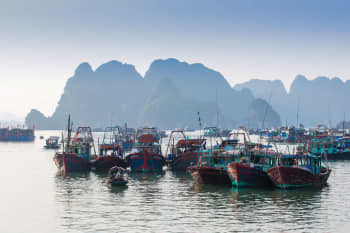Looking back at 30 years of preserving and promoting Ha Long Bay Heritage
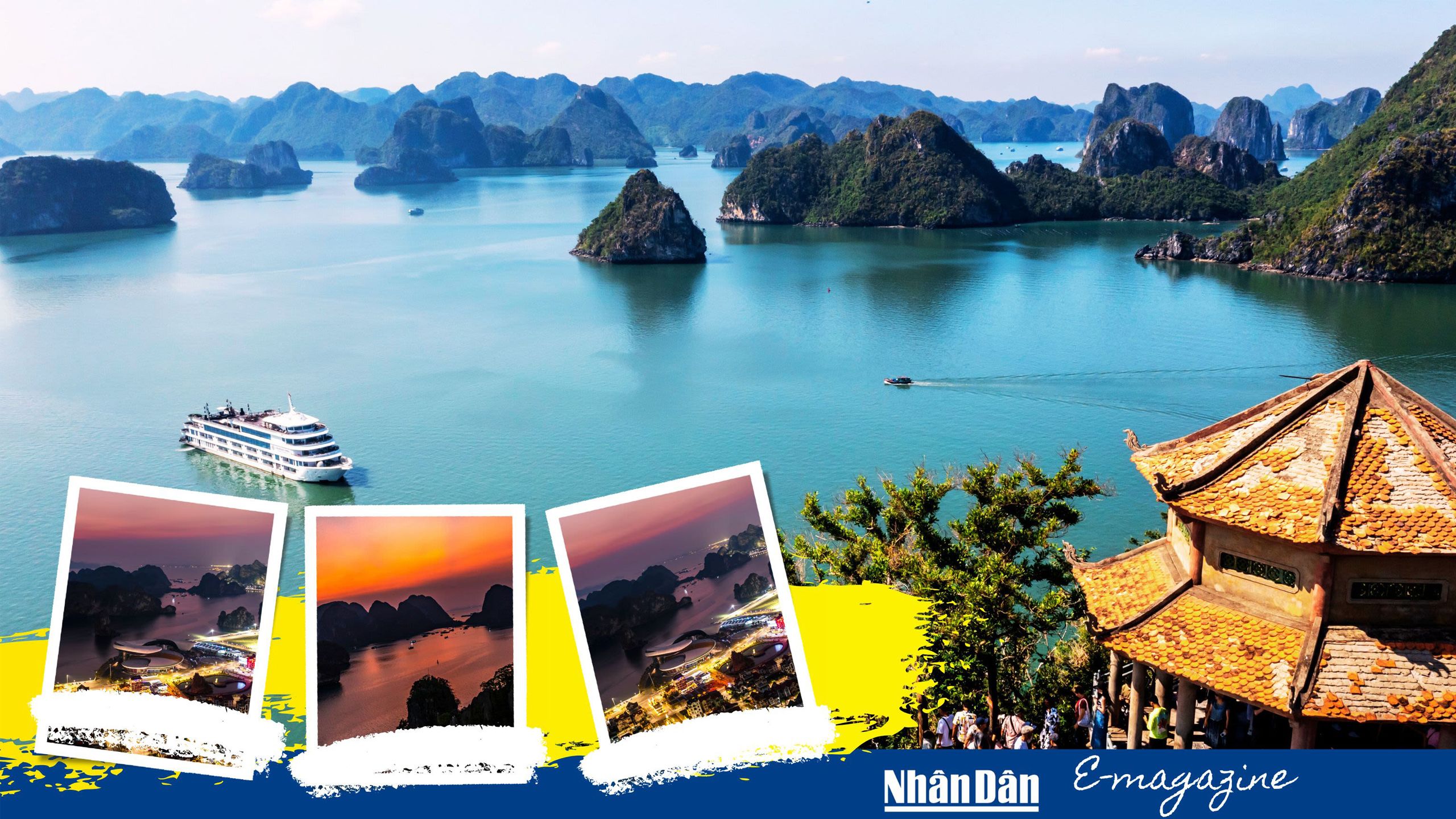
Over the past three decades, since Ha Long Bay was first inscribed as a UNESCO World Natural Heritage site, managing, preserving and promoting the outstanding universal value of its natural landscape and geological, geomorphological heritage has remained a challenge for site managers. For Nguyen Cong Thai, former Deputy Director of Ha Long Bay Management Board, the dramatic transformation of Ha Long Bay over the past 30 years feels like a dream. The journey to realise the dream of turning Ha Long Bay into an international destination has seen many ups and downs, but it contains great pride from the local people with the spirit of always putting heritage preservation first, then promoting heritage values rather than using heritage for economic development at any cost.
Challenging first steps
“Being recognised as a World Natural Heritage site, we couldn’t just admire it with pride. To preserve the heritage, we need resources, both financial and human. The initial period was challenging, and we struggled a lot,” Thai recalled about his 20-year journey living with the heritage as Deputy Director of Ha Long Bay Management Board since 1996.
A fishing port in Ha Long Bay. (Photo taken by C. Berruyer in 1938).
A fishing port in Ha Long Bay. (Photo taken by C. Berruyer in 1938).
Immediately after Ha Long Bay became a World Natural Heritage site, facing the urgent heritage preservation requirements under UNESCO’s 1972 Convention Concerning the Protection of the World Cultural and Natural Heritage, the first management mechanisms and policies were quickly established. The People’s Committee of Quang Ninh Province established the Ha Long Bay Management Board and issued temporary regulations for Ha Long Bay Management in 1995. The temporary regulations for Ha Long Bay Management were the first legal document to address specific issues related to the bay while also taking concrete steps to implement the state regulations and the international convention on heritage protection. Subsequently, this document was amended and supplemented multiple times to meet heritage management requirements in new situations.
Thai and his roughly ten colleagues took on their new responsibilities with considerable uncertainty. The survey team studying various caves to develop tourist infrastructure had to wade through mangrove forests, climb high cliffs and light torches to find their way. The team was unsure how to balance infrastructure development with preservation.
Nguyen Cong Thai, former Deputy Director of Ha Long Bay Management Board
Nguyen Cong Thai, former Deputy Director of Ha Long Bay Management Board
If we overdid the landscape construction or didn’t preserve things properly, we could violate heritage preservation guidelines. We travelled to China to the Guilin area to learn about landscape restoration and preservation methods to apply to caves like Thien Cung, Dau Go and Sung Sot. We also invited experts to Vietnam to advise on arranging spaces in harmony with the natural scenery and how to design lighting systems to enhance the natural beauty of the caves.
Financial resources and technical expertise were urgently needed. Notably, the human resources available to implement heritage preservation and promotion tasks were limited and inexperienced, yet they had to handle an enormous workload - not only preserving the heritage in its original state but also developing it into a destination that could generate tourism economic value.
Learning while working and continuously improving areas that needed attention, the attractions at Ha Long gradually transformed. Tourist routes became more convenient, and infrastructure was developed to accommodate the growing number of domestic and international visitors.
In 2002, the Prime Minister approved the Conservation and Development Plan for Ha Long Bay Heritage Values through 2020. Since then, management and conservation policies for heritage sites in general and Ha Long Bay in particular have received increasing attention from authorities at both central and local levels.
The government has issued many legal documents on heritage protection, such as the Law on Cultural Heritage, and the Decree on Protection and Management of World Cultural and Natural Heritage in Vietnam. The Party Committee and People's Council of Quang Ninh Province have issued resolutions on the management, conservation and promotion of the value of Ha Long Bay; while the Provincial People's Committee has promulgated regulations and plans for the overall management of heritage, environmental protection, and tourism development, which have contributed to improving the effectiveness of heritage management.
Heritage management models and mechanisms are regularly reviewed and adjusted to preserve heritage in the most effective manner, maximising the functions and tasks of the relevant units. Ha Long Bay Management Board, an agency run by the Quang Ninh Provincial People's Committee, is responsible for comprehensively managing activities of conservation, restoration, and promotion of the value of Ha Long Bay heritage. The Ha Long City People's Committee undertakes comprehensive state management for socio-economic activities in Ha Long Bay. Other departments, sectors and localities coordinate to manage Ha Long Bay according to their functions, tasks and responsibilities as stipulated in the Ha Long Bay Management Regulations and through the inter-sectoral coordination mechanism with diverse and flexible forms such as regulations and inter-sectoral coordination programmes.
Locals earn a living in the fishing village of Cua Van.
Locals earn a living in the fishing village of Cua Van.
The protection of the core heritage area poses many challenges regarding local economic development. Thai said that Ha Long has had to face two pressing issues in conservation, which placed the site at risk of being removed from UNESCO World Heritage list.
In 1996, Ha Long received technical support and funding from Japan for the construction of Bai Chay Bridge. The bridge had been a long-time dream, creating a vital traffic route for the entire province. However, as the Japanese people hold great respect to the heritage, Bai Chay Bridge was built in the heritage buffer zone. The Japanese partner requested Vietnam to have an agreement with the World Heritage Council and gained high consensus to build Bai Chay Bridge. Quang Ninh Province assigned the Ha Long Bay Management Board to prepare an over-10-page report to assess the socio-economic impact on the heritage. “At that time, we did not fully understand the bridge design, how the construction would be affected, nor its economic impact. We only penned a report in which we explained how the bridge would facilitate convenient traffic for the entire province on land and by waterway. This is a buffer zone, not directly affecting the heritage. The bridge was finally constructed, and since then we have witnessed the remarkable development of Quang Ninh Province, especially in tourism development.”
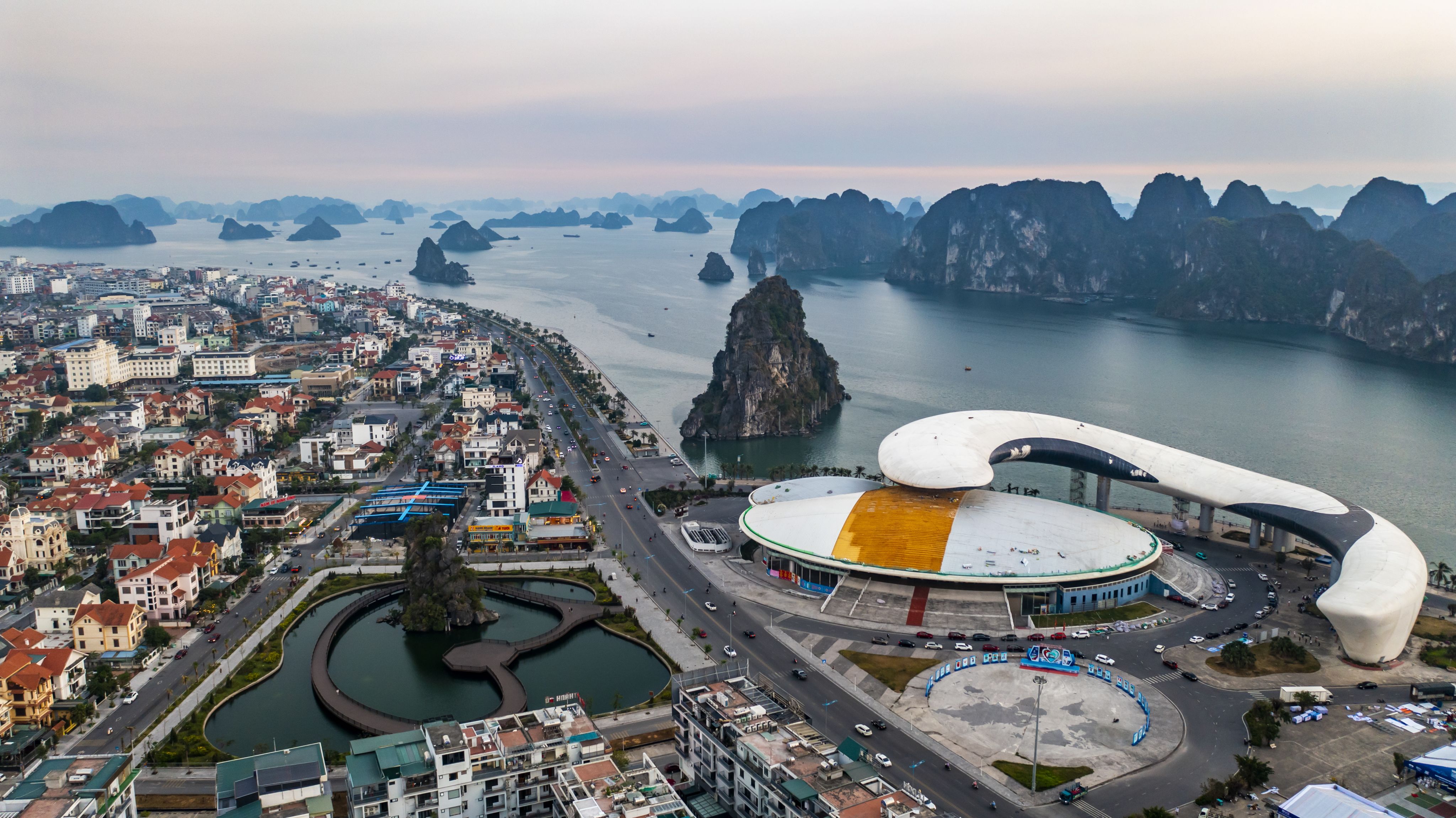
In 2016, Ha Long Bay once again faced the risk of having its world heritage status removed when the province built a number of industrial parks, including a cement factory. The Ha Long Bay Management Board continued to take on heavy responsibilities, creating an explanation report for the experts of the Heritage Council. “Many reporters waited for us after the explanation session. We had invited experts to Vietnam to assess the risk of impact on the heritage. We explained the query in two directions, one is that nature has favoured the province with resources to develop the industrial economy, and the other is that the factory area is located deep inland, far from the heritage buffer zone, so the operation of industrial parks and ports does not pose significant impact on Ha Long Bay,” said Thai.
The COVID-19 pandemic is also a challenge for Ha Long Bay in attracting repeat tourists. Typhoon Yagi destroyed 60% of the primary forest vegetation, which has also affected the beauty of the site’s landscape. Ha Long is still making daily efforts to restore the primary forest and develop new and unique tourist products which can match different tourist segments and enhance the experience of tourists such that, whenever they return, they will see the freshness of Ha Long.
Looking back at the 30 years of Ha Long Bay being recognised as a heritage, Thai said it was like a dream because he witnessed the drastic change in terms of infrastructure while still ensuring the principle of heritage conservation. Over the years, Ha Long Bay has always been identified as an important and consistent subject in the policies and strategies for the socio-economic development of Quang Ninh Province.
Managing, preserving and promoting the value of world natural heritage has been fully implemented following Vietnamese law and the International Convention on the Protection of World Cultural and Natural Heritage. Attention and support of the Vietnamese Government, central ministries, branches, experts, scientists, organisations and individuals at home and abroad, especially the UNESCO World Heritage Centre and the IUCN, Ha Long Bay heritage has been well managed and protected according to the requirements.
Synchronous conservation solutions and sustainable exploitation
Over the past 30 years, from 1994 to the end of September 2024, Ha Long Bay has welcomed over 56.3 million visitors (including 25.8 million Vietnamese visitors and 30.5 million foreign visitors), with entrance fees reaching over VND 8.47 trillion. This shows that in addition to preserving the original state of the heritage according to UNESCO regulations, promoting the heritage to bring socio-economic values to Ha Long and Vietnam is very effective. This source of revenue has become a great motivation for officials in conservation work. From the revenue, the Ha Long Bay Management Board has submitted the budget to the city to reinvest in the system of scenic spots, even investing in the coastal tourism infrastructure system of the province.
To protect and promote heritage, Ha Long City has taken systematic steps with long-term strategies to develop local tourism and preserve the values of landscapes, archaeology, and indigenous culture.
Fish rafts in Cua Van fishing village.
Fish rafts in Cua Van fishing village.
To clarify the values of Ha Long Bay as a basis for proposing effective management and conservation solutions, serving in the work of promoting and exploiting the values of the heritage, in recent years, the Ha Long Bay Management Board has independently researched and proactively coordinated with universities, research institutes, and domestic and foreign scientists to develop and implement over 20 scientific research topics on the typical values of Ha Long Bay, including research and assessment of Karst terrain, monitoring biodiversity values, zoning and protecting areas with high biodiversity values, and preserving and promoting the cultural-historical values of Ha Long Bay (fishing village culture, archaeological culture, etc.).
In addition, heritage values are regularly monitored and evaluated against the impacts and changes of the environment, climate, and the influence of socio-economic activities. Every year, the Board conducts dozens of periodic monitoring sessions on heritage values. In addition, at tourist reception points, values are regularly checked and monitored, with staff assigned to monitor daily and record data, risks, and unusual signs (if any). Other research and conservation tasks and solutions are also implemented, such as establishing a special-use forest to protect the landscape of Ha Long Bay, zoning off areas with high biodiversity values for conservation, conserving precious plant species, documenting several geological and geomorphological heritage sites, preserving and promoting several typical cultural values of fishing villages and researching, surveying, and excavating several archaeological sites in Ha Long Bay.
Many pioneering and groundbreaking solutions have been implemented to prioritise the preservation of heritage values and the protection of biodiversity. These include efforts to relocate fishing village residents from the bay to onshore living since 2014, ensuring social welfare and security for the people; the banning of fishing activities within the absolute protection zone of the heritage site since 2018, with strict enforcement against violations; the establishment of aquaculture planning zones outside the absolute protection area; and the ending of loading and transfer for bulk goods such as clinker, cement, and woodchips on Ha Long Bay.
Vu Kien Cuong, Head of Ha Long Bay Management Board
Vu Kien Cuong, Head of Ha Long Bay Management Board
Environmental protection, along with pollution prevention and control, has always been a top priority. Significant efforts have been made to improve and ensure the environmental quality of Ha Long Bay, leading to new breakthroughs. Many projects focusing on environmental protection for Ha Long Bay have been implemented, such as the Green Growth Project and the Ha Long Bay Environmental Protection Project funded by JICA.
To control pollution from various sources, particularly from coastal areas, border zones, and coal mining and transportation activities, Quang Ninh Province has strictly relocated coal transportation and loading activities away from Ha Long Bay. Pollution-causing facilities (such as coal screening and coal ports) have been moved out of buffer zones, and measures have been implemented to improve the environment. The province has committed to not approving new industrial facilities or licensing factories that could negatively impact Ha Long Bay’s environment. It has also ended the loading and transfer of bulk goods such as clinker, cement, woodchips, and limestone products on the bay.
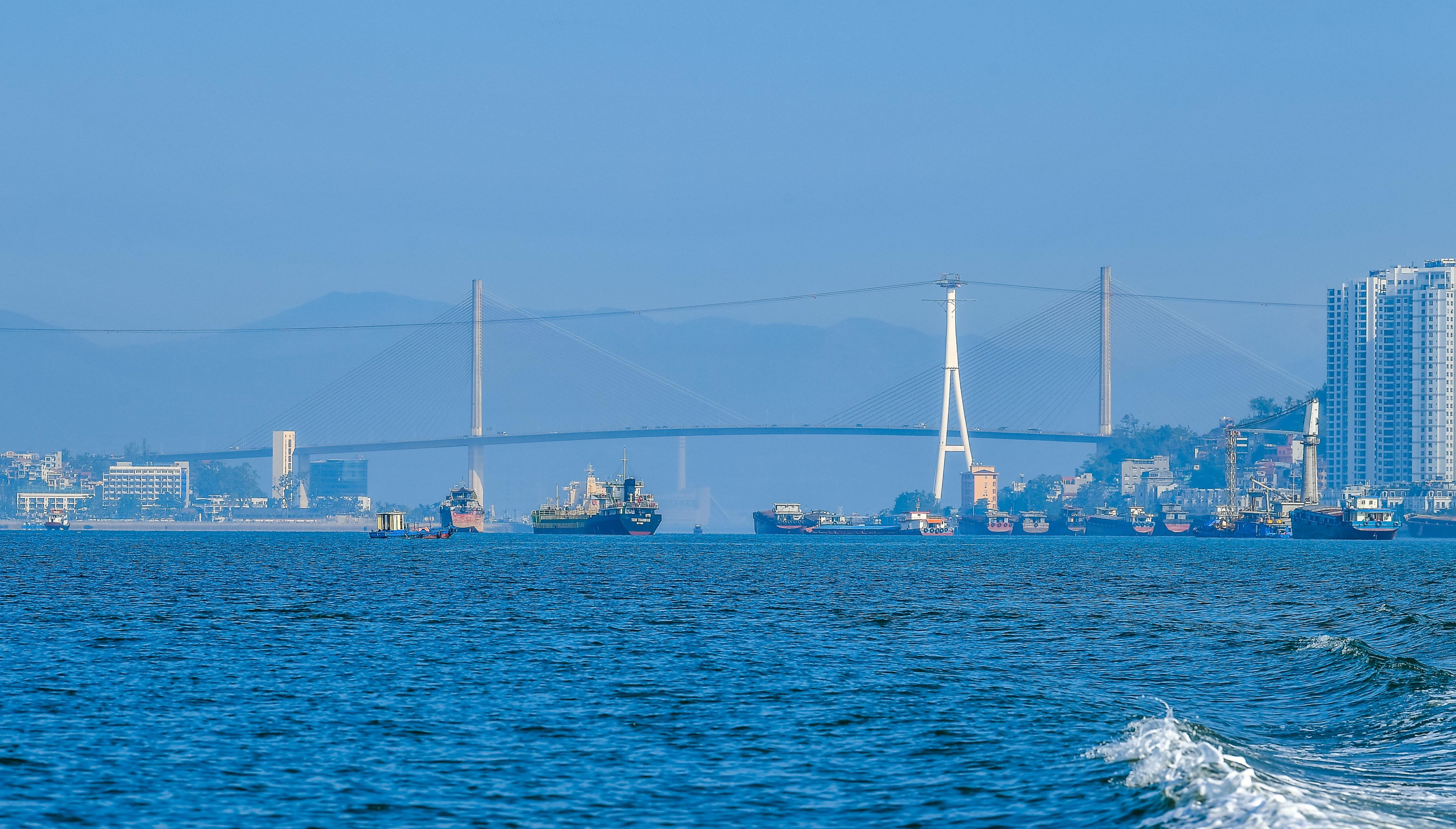
To prevent water pollution, foam buoys have been replaced with durable floating materials for floating structures on the bay. Regular quarterly monitoring of water quality is conducted at 41 observation points, and two automatic wastewater monitoring stations have been installed and are operational along the coastline.
Additionally, Ha Long City has undertaken projects such as building a smart city and developing Quang Ninh Province’s environmental technical standards, incorporating specific environmental criteria tailored to the region’s unique ecosystems and activities. The city has also strengthened the roles, responsibilities, and collaboration between localities and sectors in controlling waste sources. Nearly all industrial zones now utilise wastewater collection and treatment systems before discharging into the environment.
The province has also implemented the Ha Long City drainage and domestic wastewater treatment project, investing in the upgrade of wastewater collection and treatment systems in coastal areas around Ha Long Bay. These efforts aim to gradually increase the wastewater collection and treatment rate in urban areas (Ha Long, Cam Pha, Van Don, Quang Yen) from the current 48% to at least 65% by 2025. All urban areas within the heritage site’s buffer zone are expected to have wastewater treatment systems to ensure environmental safety.
All tourist boats operating on Ha Long Bay have been equipped with oil-water separators, and newly built boats include wastewater treatment systems that meet current standards. Projects using technologies such as Jokaso and Uniship have been deployed to treat and minimise wastewater pollution at tourist sites on the bay.
Efforts to reduce plastic waste within the heritage site have also been effectively implemented. Since September 1, 2019, the “Plastic-Free Ha Long Bay” programme has prohibited the use of single-use plastic products in tourism and service activities on the bay. This initiative has resulted in a 90% reduction of single-use plastic waste collected at tourist sites and replaced 94% of foam buoys on floating structures.
The fish farming area in the fishing village of Cua Vạn.
The fish farming area in the fishing village of Cua Vạn.
The infrastructure of Ha Long City has been comprehensively developed, creating a new look for Ha Long tourism, enhancing the appeal of the Ha Long Bay heritage site, and providing the best experiences for visitors while extending their length of stay.
Ha Long Bay currently has 502 tourist vessels, including 323 sightseeing vessels, 177 accommodation vessels, four restaurant vessels and seven discovery cruises. In addition, Ha Long Bay has 590 kayaks, 100 rowboats, 31 speedboats and 134 tender boats transporting tourists. The activities of tourist vessels and tourism services are strictly managed. In 2018, Ha Long applied the "Green Sail" Eco-label criteria set for tourist vessels in the bay to encourage tourist vessels to comply with environmental protection and sustainable development.
Regarding service business activities in the bay, from being scattered, small-scale, lacking legal procedures according to regulations, and low service quality, by 2016, all types of kayak, rowboat and speedboat services were thoroughly reviewed and inspected. The quality of cruise ships, organisations and individuals doing tourism business on the bay has improved.
Ti Top Beach.
Ti Top Beach.
Constantly expanding unique tourism products, Ha Long Bay currently has eight sightseeing and tourism routes, five clusters and overnight accommodation sites. Tourism products and services on the bay include visiting caves, sightseeing, overnight accommodation, entertainment, swimming, kayaking, and rowing boats. Tourism services on Ha Long Bay are increasingly diversified, aiming at sustainable tourism development. In addition to focusing on improving the quality of traditional tourism products such as visiting caves, swimming, kayaking, and overnight stays on cruises, Vu Kien Cuong, Head of Ha Long Bay Management Board, said that the bay has been developing new routes, sites and tourism products and services. For example, Ha Long Bay is putting into trial the operation of discovery cruises with three separate sightseeing routes, the product of Night Cruise Street, and expanding tourism products based on preserving and promoting the historical and cultural values of fishing villages, archaeological culture, and biodiversity.
“Currently, some world natural and cultural heritages, such as Italy and Spain, must close due to the risk of destroying the heritage. We also recognise that with Ha Long Bay. Therefore, we also learn from the experience of other countries not to chase after a large number of tourists to overexploit the heritage but to assess the endurance and carrying capacity of the heritage to see how much it can withstand to effectively divide tourism routes, not to put pressure on the heritage, destroy the natural landscape or archaeological sites”, Cuong explained.
In addition to tangible cultural values, Ha Long Bay contains unique intangible cultural values of the fishing community that once lived on the bay. With a life attached to the sea for generations, the simple fishermen have adapted and found a way to behave harmoniously with nature from their rich folk knowledge. Although they have moved to the mainland to live, the unique cultural features of the fishing community in Ha Long Bay, such as customs, beliefs, festivals, and ways of making a living, are still preserved, conserved, restored and promoted, creating unique tourism products, contributing to the unique characteristics of this world natural heritage.
Promoting the role of indigenous communities
Conservation work will be a real burden for the management agency when it has to preserve and ensure the livelihood of local people without putting pressure on the heritage. The change in people's awareness and the participation of indigenous communities in protecting the heritage have had many positive effects over time.
Propaganda and promotion activities for Ha Long Bay have been diversified in form, enriched in content and improved in effectiveness, with a column on heritage in local newspapers and radio stations since 1999 and large billboards at important traffic intersections. Exploiting and making the most of the effective propaganda role of social networks, Ha Long has launched its own website about the bay in six languages, created a Facebook page about Ha Long Bay, and expanded propaganda publications with dozens of publications.
On November 13, the super yacht Celebrity Solstice (Malta nationality) docked at Ha Long International Passenger Port, bringing nearly 2,700 European and American tourists. (Photo: VNA)
On November 13, the super yacht Celebrity Solstice (Malta nationality) docked at Ha Long International Passenger Port, bringing nearly 2,700 European and American tourists. (Photo: VNA)
Through tourism and trade promotion programmes, exhibitions, and conferences domestically and internationally, Ha Long City has expanded its efforts to promote and advertise Ha Long Bay in key domestic and international tourist markets. Notably, the city has worked with media agencies and filmmakers from both Vietnam and abroad to showcase the majestic natural beauty of Ha Long Bay to the world. It regularly compiles, edits, and publishes promotional materials about the bay in multiple languages (English, Chinese, etc.) while strengthening ties with the Vietnam World Heritage Club to share information and promote the bay’s heritage values and potential.
Efforts to raise community awareness about heritage protection are targeted at various groups, including domestic and international students, coastal residents, tourists, and organisations or individuals engaged in socio-economic activities on the bay. These efforts are integrated with educational, extracurricular, and hands-on activities focusing on preserving the landscape, environment, and heritage values of Ha Long Bay.
Since the 2000-2001 academic year, the province has introduced a heritage protection education programme in schools, which has been well-received and expanded to all schools across the region. Since 2005, the successful Ecoboat programme, an extracurricular activity focused on environmental protection in Ha Long Bay under the motto of “learning through play, playing through learning,” has been implemented. Additionally, a guidebook for ecological environment protection in the bay has been developed, along with a network of heritage protection collaborators. The "Tourism Civility" and "Ha Long Smile" codes of conduct have been established and implemented. Activities such as Green Sunday, environmental clean-up campaigns, and hands-on environmental education on the bay have also been organised. Community awareness and participation in heritage protection and preservation have seen significant positive changes.
The Ha Long Bay Management Board has strengthened and expanded direct relationships with international organisations, fostering economic and cultural exchanges, especially in heritage management and conservation. Numerous sponsored programs and projects have been implemented, progressively integrating Ha Long Bay into international heritage protection initiatives. These efforts have attracted many projects related to research, heritage conservation, environmental protection, community education, and capacity building in heritage management in Ha Long Bay.
Additionally, the Ha Long Bay Management Board has regularly received support and guidance from IUCN and UNESCO experts in heritage management, particularly in environmental protection, carrying capacity assessment, and sustainable tourism management. During various terms of the World Most Beautiful Bays Club, leaders from the Ha Long Bay Management Board have been elected as Vice Presidents of the Club, contributing to enhancing the global image and status of Ha Long Bay.

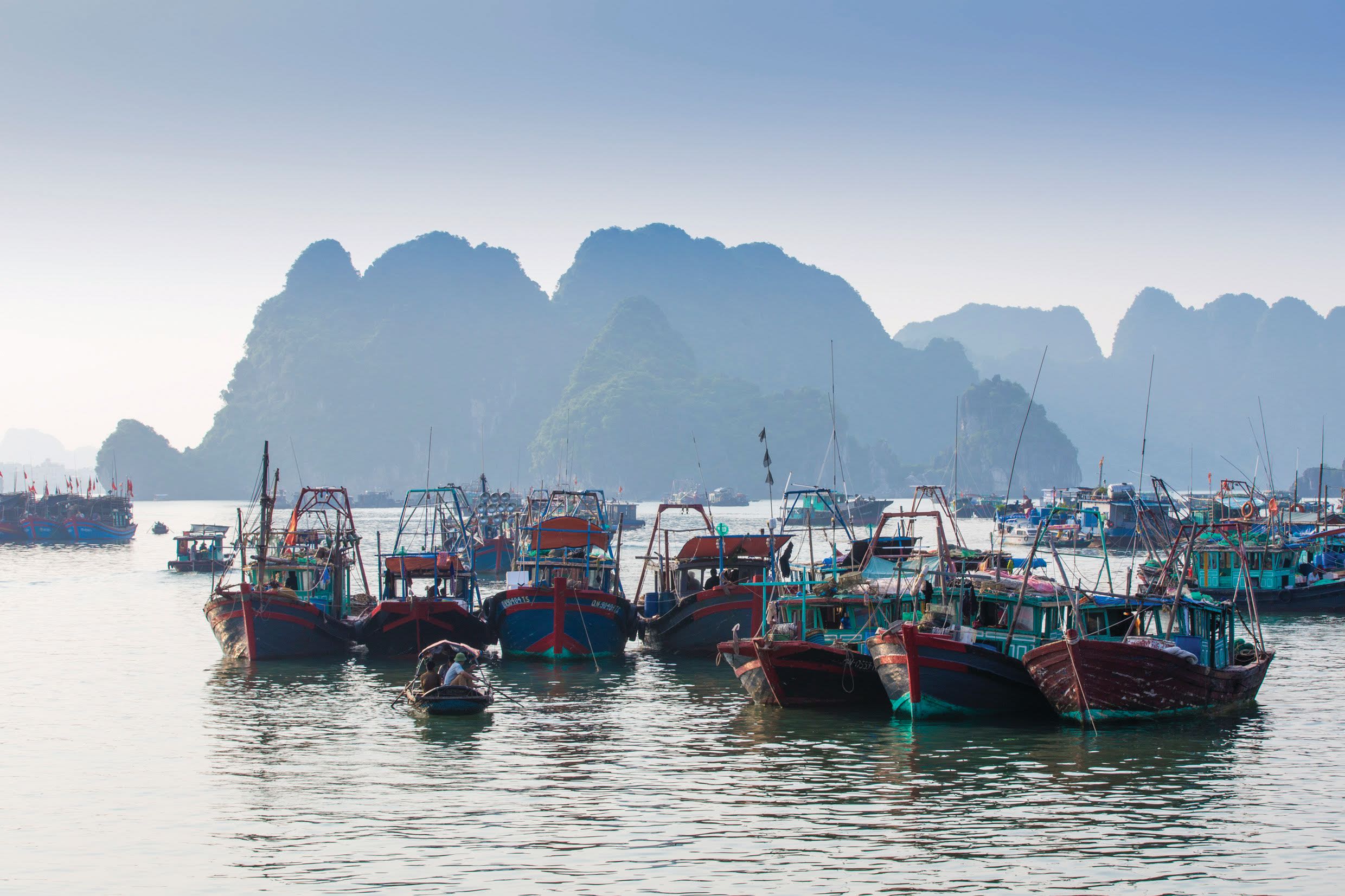
Vu Kien Cuong proudly expressed that every Quang Ninh resident and Vietnamese person, in general, clearly understands their responsibility to preserve, restore, and promote the world’s natural heritage. The Management Board has developed a dedicated strategy to build a workforce with the passion, competence, and expertise required to carry out its mission of protecting and promoting the bay’s values. Emphasising the importance of incorporating knowledge from domestic and international experts, scientists, and researchers in heritage conservation, the board is committed to accurately assessing the bay’s value and determining the necessary steps for the preservation, restoration, and sustainable development of its heritage.
Currently, only 20% of Ha Long Bay’s tourism resources have been utilised. The remaining is still under research by the Ha Long Bay Management Board, with plans to develop and transform these resources into unique new tourism products. A proposal has been prepared to report to Quang Ninh provincial leaders for implementation. The goal is to develop new tourism products while preserving the pristine natural beauty bestowed upon Ha Long Bay, safeguarding the indigenous cultural heritage and archaeological sites. This approach aims to prevent the waste of tourism resources, ensuring Ha Long remains green and a welcoming destination for visitors.
Published: December 6, 2024
Content: THAO LE - QUANG THO - THIEN LAM
Design: DANG PHI
Photo: THANH DAT
